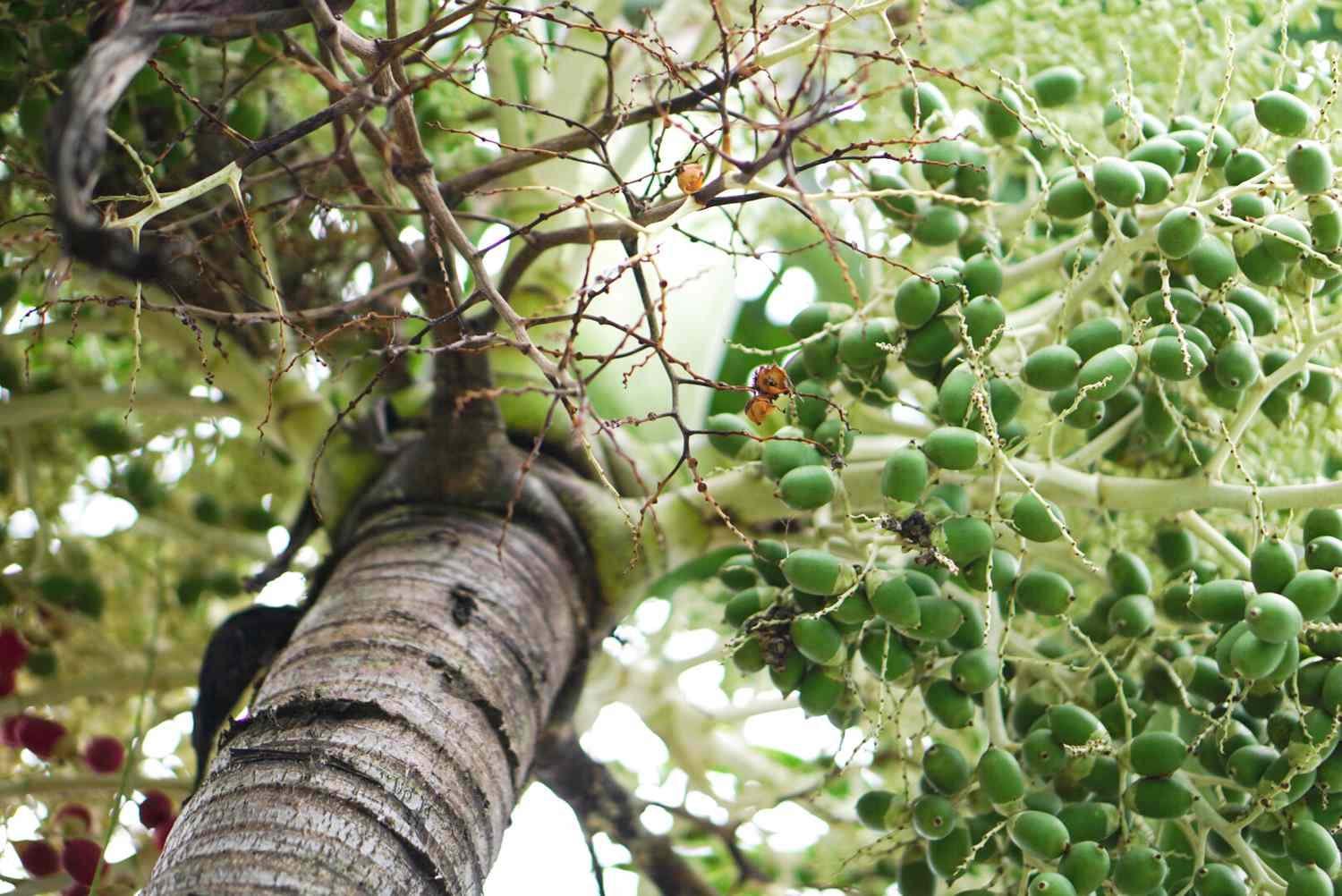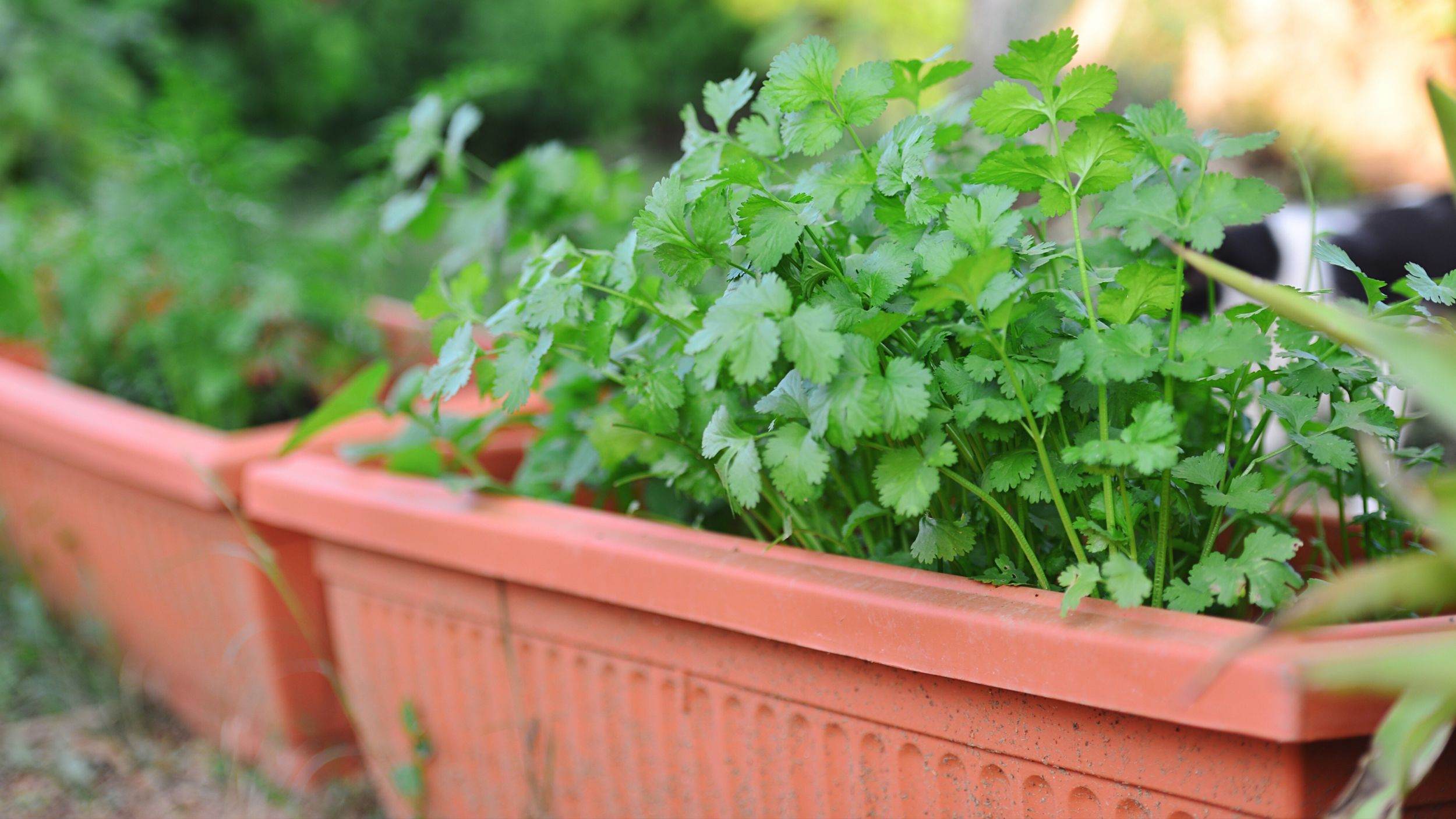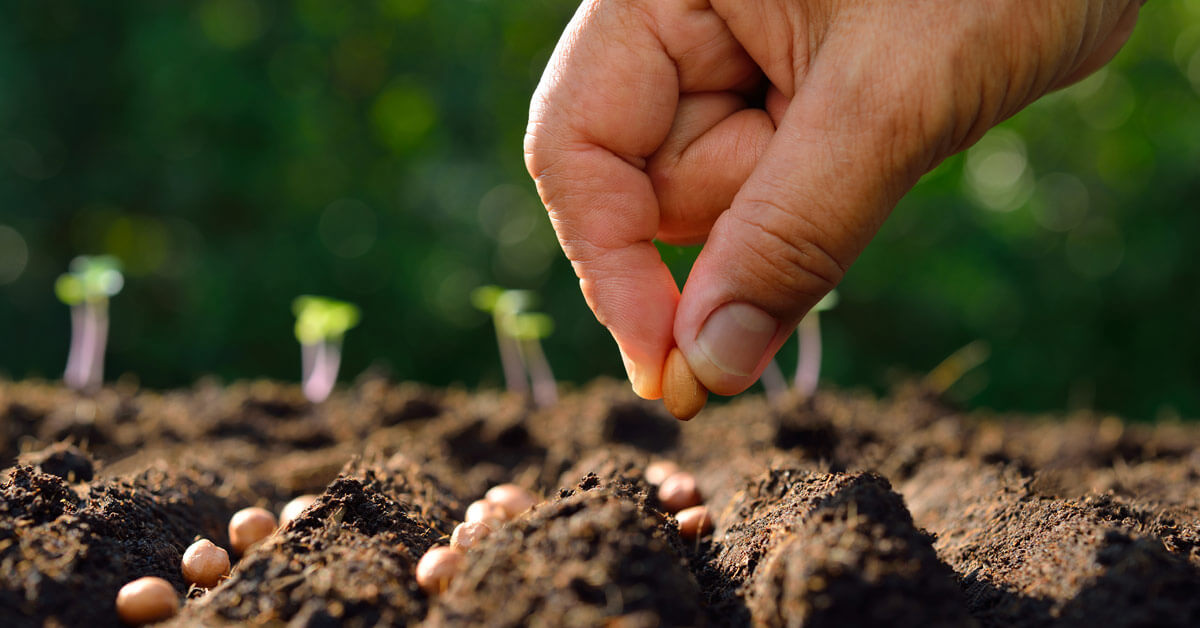Home>Gardening News and Trends>Latest News>What Emerges From The Seed And Pushes Into The Soil?


Latest News
What Emerges From The Seed And Pushes Into The Soil?
Published: February 14, 2024
Discover the latest news on what emerges from the seed and pushes into the soil. Stay informed with our updates on nature's wonders.
(Many of the links in this article redirect to a specific reviewed product. Your purchase of these products through affiliate links helps to generate commission for Chicagolandgardening.com, at no extra cost. Learn more)
Table of Contents
Introduction
Unveiling the Hidden World Beneath: The Fascinating Journey of Roots
As we walk through a garden or a forest, we are captivated by the majestic sight of towering trees and vibrant flowers. However, beneath the earth's surface lies a hidden world teeming with life and activity. This concealed realm is where the journey of a plant truly begins, as a tiny seed germinates and sends out its first explorers into the soil. These explorers, known as roots, play a crucial role in the growth and survival of plants, serving as their lifeline and foundation.
Roots are not merely passive anchors; they are dynamic and resilient structures that constantly seek out water, nutrients, and support for the plant above. Their journey into the soil is a testament to nature's ingenuity and the intricate mechanisms that drive the cycle of life. In this article, we will embark on a captivating exploration of the world beneath our feet, delving into the remarkable role of roots in plant growth, the diverse types of roots that exist, their intricate structure and functions, as well as the myriad factors that influence their growth and development.
Join us as we unravel the mysteries of this hidden world and gain a deeper appreciation for the unseen forces that sustain the beauty and abundance of the plant kingdom. Let's embark on a journey that will unearth the secrets of what emerges from the seed and pushes into the soil, revealing the remarkable story of roots and their profound impact on the natural world.
The Role of Roots in Plant Growth
Roots are the unsung heroes of the plant kingdom, playing a pivotal role in the growth, development, and overall well-being of plants. These subterranean marvels serve a multitude of essential functions that are indispensable to the survival of plants in diverse ecosystems. One of their primary roles is to anchor the plant securely in the soil, providing stability and support as it grows and matures. This anchoring function is especially crucial for tall and expansive plants, as it prevents them from toppling over in the face of strong winds or heavy rains.
Beyond their role as anchors, roots are instrumental in the uptake of water and essential nutrients from the soil. Through a complex network of microscopic root hairs, plants are able to absorb water, along with vital minerals such as nitrogen, phosphorus, and potassium, which are essential for their growth and metabolic processes. This process of nutrient uptake is facilitated by the intricate interplay of root structures and specialized transport mechanisms, allowing plants to thrive in a wide range of soil conditions.
Furthermore, roots contribute to the storage of reserve food materials, such as carbohydrates and proteins, which are crucial for sustaining plant growth during periods of dormancy or adverse environmental conditions. In addition to their physiological functions, roots also interact with soil microorganisms in a symbiotic relationship, exchanging nutrients and forming mutually beneficial partnerships that enhance the plant’s resilience and vitality.
Moreover, roots play a vital role in soil stabilization and erosion control, particularly in fragile ecosystems such as wetlands and slopes. By binding the soil particles together and creating a dense network beneath the surface, roots help prevent soil erosion and promote the overall health of the surrounding environment.
From anchoring the plant in the earth to facilitating nutrient uptake, storage, and soil stabilization, the role of roots in plant growth is truly multifaceted and indispensable. Their intricate functions form the cornerstone of a plant’s resilience and ability to thrive in diverse habitats, underscoring the significance of these hidden wonders in the intricate tapestry of the natural world.
Types of Roots
Roots come in a diverse array of forms and structures, each adapted to fulfill specific functions and thrive in varied environmental conditions. Understanding the different types of roots provides valuable insights into the remarkable adaptability and resilience of plants across the globe.
The most common type of root system is the taproot system, characterized by a single, dominant root that grows vertically into the soil, while smaller lateral roots branch off from it. This type of root system is typically found in dicotyledonous plants and provides strong anchorage and efficient nutrient uptake, making it well-suited for plants in diverse habitats, from deserts to forests.
Conversely, fibrous root systems consist of a dense network of fine roots that emerge from the stem base and spread horizontally in all directions. This type of root system is commonly observed in monocotyledonous plants and is adept at soil stabilization and erosion control, making it ideal for grasses and other herbaceous plants.
Another intriguing adaptation is the aerial roots, which emerge above the ground or water surface and serve various functions, such as providing additional support, facilitating gas exchange, and absorbing moisture from the air. Epiphytic plants, such as orchids and bromeliads, showcase the remarkable versatility of aerial roots in accessing nutrients and water in challenging environments.
Furthermore, adventitious roots defy convention by emerging from non-traditional plant parts, such as stems, leaves, or even aerial branches. These roots contribute to the plant’s ability to propagate vegetatively, anchor in diverse substrates, and enhance its overall resilience in response to environmental stressors.
Understanding the diverse types of roots illuminates the remarkable adaptability and ingenuity of plants, showcasing nature’s ability to tailor root structures to specific ecological niches and challenges. From taproots to fibrous systems, and from aerial roots to adventitious marvels, the world beneath our feet is a testament to the astonishing diversity and resilience of root adaptations across the plant kingdom.
Root Structure and Function
Roots exhibit a remarkable diversity of structures and functions that are finely tuned to support the growth and survival of plants in a myriad of environments. At the microscopic level, roots are equipped with specialized features that enable them to fulfill their essential roles in nutrient uptake, water absorption, and structural support.
The outermost layer of roots, known as the epidermis, is lined with delicate root hairs that significantly increase the surface area for nutrient and water absorption. These microscopic protrusions play a pivotal role in enhancing the root’s capacity to explore the soil and extract essential resources vital for the plant’s growth and metabolic processes.
Beneath the epidermis lies the cortex, a region rich in parenchyma cells that store nutrients and provide structural support to the root. This region also houses the endodermis, a specialized layer of cells that regulate the movement of water and nutrients into the vascular tissue of the root through a selective barrier known as the Casparian strip. This crucial mechanism ensures the efficient uptake of essential substances while preventing the entry of harmful compounds into the plant’s vascular system.
Deeper within the root, the vascular tissue consists of xylem and phloem, which facilitate the transport of water, minerals, and organic compounds throughout the plant. The xylem conducts water and dissolved minerals upward from the roots to the rest of the plant, while the phloem transports organic nutrients, such as sugars and amino acids, to various parts of the plant, including the roots themselves.
Functionally, roots are adept at responding to environmental cues and physiological demands, adjusting their growth patterns and metabolic activities to optimize the plant’s performance. They exhibit remarkable plasticity, capable of adapting to changes in soil moisture, nutrient availability, and physical barriers, thereby maximizing their efficiency in resource acquisition and structural support.
The intricate structure and multifaceted functions of roots underscore their indispensable role in the overall health and vigor of plants. From the microscopic intricacies of root hairs to the vascular highways that transport essential substances, roots exemplify nature’s ingenuity and adaptability, serving as the lifelines that sustain the vitality and resilience of the plant kingdom.
Factors Affecting Root Growth
The growth and development of roots are intricately influenced by a myriad of factors, ranging from environmental conditions to genetic predispositions. Understanding these influential factors provides valuable insights into the dynamic interplay that shapes root architecture and function in diverse plant species.
One of the primary factors impacting root growth is soil composition, encompassing physical, chemical, and biological properties that significantly influence the ability of roots to penetrate the soil and access essential resources. Soil texture, structure, and compaction can pose physical barriers to root elongation and exploration, while nutrient availability, pH levels, and the presence of beneficial or detrimental microorganisms profoundly impact root development and metabolic activities.
Water availability is another critical factor that profoundly affects root growth, as both water excess and deficiency can exert detrimental effects on root architecture and function. In waterlogged soils, roots may experience oxygen deprivation, leading to impaired growth and metabolic dysfunction, while drought conditions can restrict root expansion and compromise the plant’s ability to access water and nutrients.
Furthermore, environmental factors such as temperature, light exposure, and mechanical stimuli play significant roles in shaping root growth patterns and responses. Temperature fluctuations can influence root elongation and branching, while light exposure governs the development of aerial and subterranean roots in response to phototropic and geotropic cues. Mechanical stimuli, including wind and soil resistance, can trigger adaptive responses in root architecture, enhancing stability and resource acquisition.
Genetic and hormonal factors also exert profound influences on root growth, as plants possess genetic predispositions that dictate root architecture and plasticity in response to environmental cues. Hormones, such as auxins, cytokinins, and gibberellins, orchestrate complex signaling pathways that regulate root growth, branching, and responses to stress, contributing to the remarkable adaptability of roots in diverse ecological contexts.
By comprehensively understanding the multifaceted factors that influence root growth, we gain a deeper appreciation for the intricate interplay between genetic, physiological, and environmental determinants that shape the remarkable diversity and resilience of root systems across the plant kingdom.
Unveiling the Hidden World Beneath: The Profound Legacy of Roots
As we conclude our exploration of the captivating world beneath our feet, we are left in awe of the profound legacy of roots and their enduring impact on the natural world. From the humble beginnings of a germinating seed to the intricate network of roots that sustains towering trees and delicate wildflowers, the journey of roots into the soil embodies nature’s ingenuity and resilience.
Roots, in their diverse forms and functions, serve as the lifelines that anchor plants in the earth, enabling them to access water, nutrients, and support essential for their growth and survival. Their role in stabilizing soil, preventing erosion, and fostering symbiotic relationships with soil microorganisms underscores their far-reaching influence on the health and vitality of ecosystems worldwide.
Moreover, the intricate structure and multifaceted functions of roots exemplify nature’s adaptability and responsiveness to environmental cues, showcasing their ability to thrive in diverse habitats and overcome challenges with remarkable resilience. Whether navigating through compacted soils, seeking out water in arid landscapes, or forming intricate partnerships with beneficial microorganisms, roots embody the tenacity and resourcefulness of the plant kingdom.
Furthermore, the factors that influence root growth, from soil composition and water availability to genetic predispositions and hormonal regulation, underscore the intricate interplay of environmental, physiological, and genetic determinants that shape the remarkable diversity and adaptability of root systems. This dynamic interplay highlights the resilience and responsiveness of roots to the ever-changing conditions of their surroundings, contributing to the enduring legacy of plants in sustaining life on our planet.
As we reflect on the profound legacy of roots and their indispensable role in the intricate tapestry of the natural world, we are reminded of the hidden wonders that lie beneath the surface, shaping the beauty and abundance of the ecosystems that surround us. The journey of what emerges from the seed and pushes into the soil is a testament to the enduring legacy of roots, weaving a narrative of resilience, adaptability, and profound interconnectedness that sustains life on Earth.








